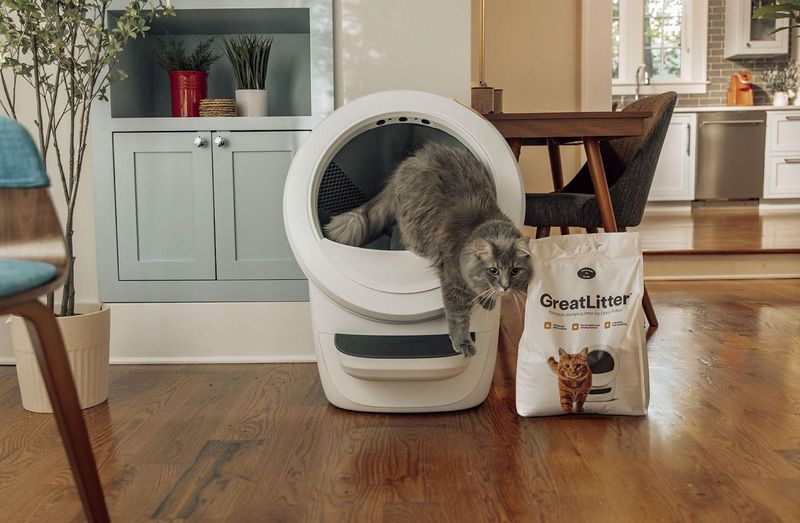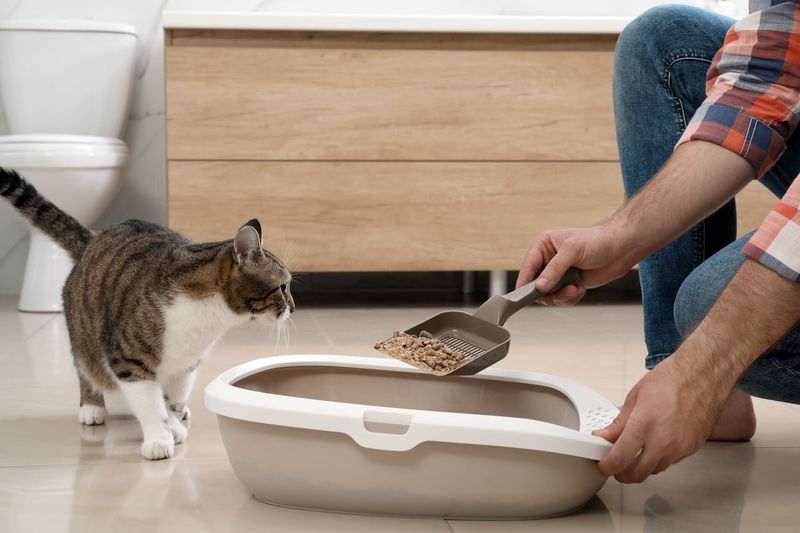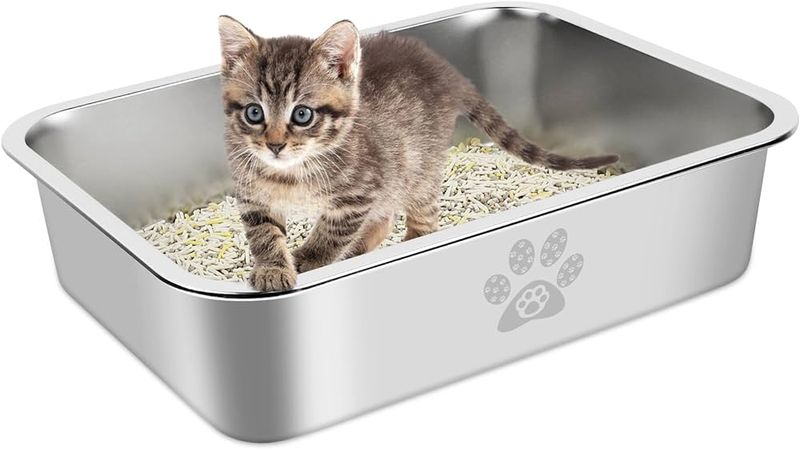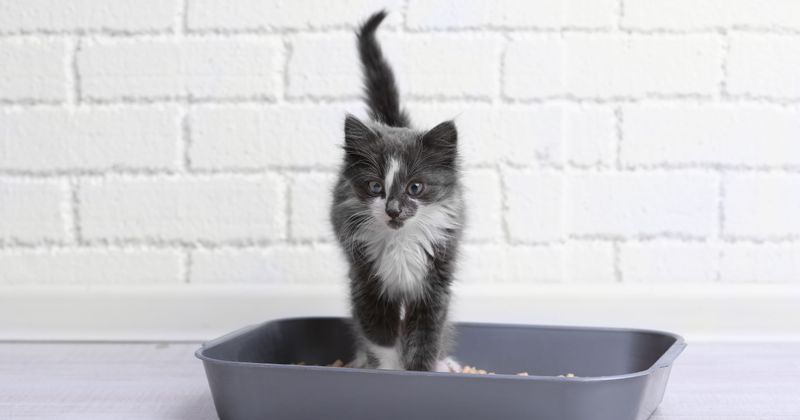📖 Table of Content:
- 1. Unpleasant Odor Persisting
- 2. Frequent Accidents Outside Box
- 3. Cat Shows Reluctance to Use
- 4. Overcrowded Litter Area
- 5. Litter Tracking Everywhere
- 6. Litter Box Becomes Too Small for Your Cat
- 7. Cat Becomes More Aggressive or Anxious Near the Litter Box
- 8. Litter Box Is Not Kept Clean Enough to Your Cat’s Preference
Cats are notoriously picky creatures, and their litter box setup is no exception. A comfortable and well-maintained litter box is essential not only for your cat’s happiness but also for their overall health.
Ignoring subtle signs of dissatisfaction with their litter box can lead to behavioral problems and even health issues like urinary tract infections. Whether it’s the size, location, cleanliness, or type of litter, understanding your cat’s preferences is crucial for maintaining a harmonious household.
To help you ensure your furry friend stays content and stress-free, here are 8 unmistakable signs that indicate it might be time to upgrade or rethink their litter box setup.
1. Unpleasant Odor Persisting
If your cat’s litter box often smells unpleasant despite regular cleaning, it’s a strong indication a change is needed. Odors can linger even after scooping, largely due to the material or design of the box. Many designs trap smells rather than ventilate, leading to a persistent stink.
Upgrading to a high-quality box with odor-control features can resolve this. Options like those with built-in charcoal filters or strategic ventilation might be beneficial. Additionally, consider the type of litter you’re using; some varieties are more adept at masking odors.
Finally, the location of the box also contributes to the smell issue. Placing it in a well-ventilated area helps. A new setup with these considerations will not only benefit your cat but also improve the living conditions in your home. An odor-free environment contributes to a happier pet and a more pleasant home.
2. Frequent Accidents Outside Box
Cats routinely having accidents outside their litter box may signal a need for change. This behavior can stem from various factors including box size, type, or cleanliness. It’s crucial to assess whether the current box is too small or difficult for the cat to access.
Sometimes, the litter itself might be disagreeable to them. Experimenting with different textures or materials could reveal a preference. Moreover, multiple cats sharing a single box can lead to territorial issues, prompting some to avoid it altogether.
Addressing these aspects by providing a more suitable box or additional boxes can quickly remedy the situation. Such adjustments ensure that your cat feels comfortable and secure, preventing further accidents. Always observe your cat’s preferences and needs, as these can change over time, requiring periodic reassessment of their litter box setup.
3. Cat Shows Reluctance to Use
When your cat approaches the litter box cautiously or hesitantly, it might be time to rethink its setup. Reluctance often hints at discomfort or dissatisfaction with some aspect of the current arrangement. Consider the accessibility; high sides or narrow entries can be challenging.
Additionally, the location might not feel private enough for comfort, deterring use. Try relocating the box to a quieter, more secluded spot. Also, some cats are sensitive to the type of litter used. Switching to a softer or unscented variety could encourage better habits.
Pay attention to your cat’s body language around the box. If they seem unsure or hesitant, it’s a clear sign to reevaluate. Making the setup more inviting and user-friendly can lead to increased use and a happier pet. These small changes demonstrate your understanding and responsiveness to their needs.
4. Overcrowded Litter Area
An overcrowded litter box area can cause stress and behavioral problems in cats. If your multiple cats seem to be jostling for space or you notice increased tension near the box, adjustments are necessary. Cats require personal space, even for their toilet needs.
Ideally, provide one box per cat, plus an additional one. This arrangement reduces competition and territorial disputes. It’s also essential to ensure that the boxes are spacious enough for comfortable use, preventing any feelings of confinement.
Additionally, place boxes in different locations to offer variety and choice. This setup helps maintain peace and reduces the likelihood of accidents. Each cat should feel they have a safe, private spot, contributing to their overall wellbeing. Taking these steps shows your commitment to accommodating each cat’s needs.
5. Litter Tracking Everywhere
Excessive litter tracking is not only messy but can also indicate that your litter box setup needs an upgrade. When litter is constantly being scattered outside the box, it may be due to its design or location. Some boxes lack features that minimize tracking, such as higher sides or exit paths with ridges.
Consider a box with a top entry or a mat designed to catch litter as the cat exits. These can significantly reduce the spread of litter around your home. The type of litter you use also plays a role; heavier grains tend to scatter less than finer ones.
Keeping the area clean and tidy not only benefits you but also your cat, who will appreciate a cleaner space. Regular maintenance and thoughtful choices in box design and litter type can effectively manage tracking issues, keeping your home cleaner.
6. Litter Box Becomes Too Small for Your Cat
Imagine your cat trying to squeeze into a litter box that resembles a tight pair of jeans after the holidays. If your feline friend seems cramped, it might be time for an upgrade.
Cats grow over time, and what once was a suitable size might now feel like a confining space. Observe if your cat’s tail is sticking out or if they have difficulty turning around.
By switching to a larger box, you provide more comfort and encourage your cat to use it regularly, minimizing accidents outside the box. A spacious box means a happy and relaxed kitty.
7. Cat Becomes More Aggressive or Anxious Near the Litter Box
Does your cat suddenly hiss or swat when near the litter box? An unexpected change in behavior might indicate discomfort or dissatisfaction.
Cats can become anxious if they associate the box with negative experiences, like being startled or feeling unsafe. Address this by assessing the box’s location. Is it too noisy or busy? Try relocating it to a quieter spot.
Additionally, consider changing the type of litter. A softer texture or different scent might make all the difference. A calm environment contributes to a more serene and contented cat.
8. Litter Box Is Not Kept Clean Enough to Your Cat’s Preference
Cats are famously clean creatures, and a dirty litter box can quickly become a deal-breaker. You might notice your cat making judgmental glances at an unkempt box, refusing to step inside.
Regular cleaning is key. Scoop out waste daily and change the litter weekly to keep things fresh. If you see your cat ‘holding it’ or choosing another spot altogether, it’s time to up your cleaning game.
Remember, a clean box is not just about hygiene; it’s a matter of feline dignity. Your cat deserves a pristine throne.








